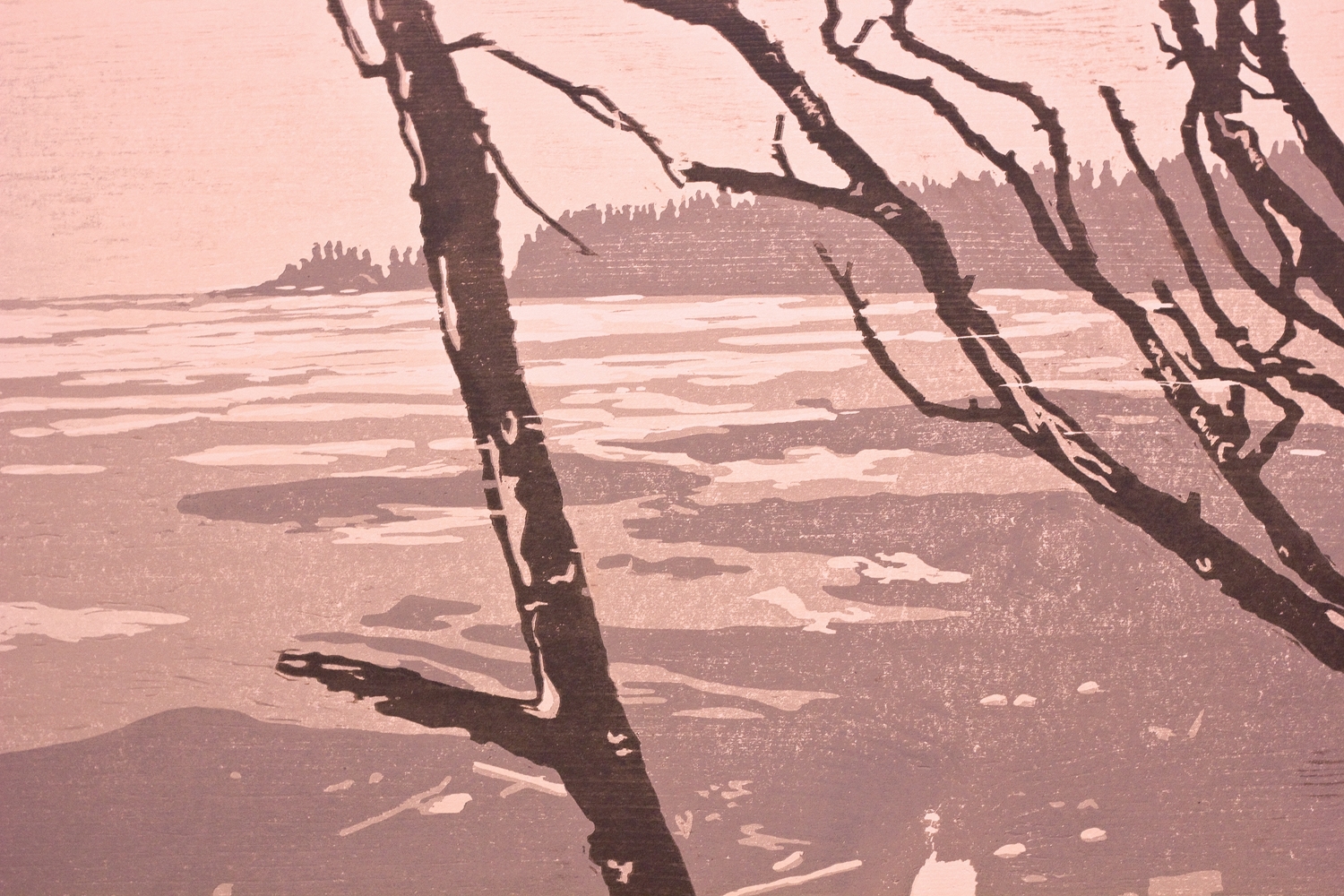Gales Gallery’s A Study of Landscape elicits the relationship between landscape and psychological responses
Emilia Vieni
Contributor

The Gales Gallery’s latest offering is unexpectedly traditional. Featuring woodblock paintings by Angela Snieder and oil paintings by Matthew Tarini in their collaboration A Study of Landscape, the exhibition attempts to illustrate the relationship between landscape and the psychological responses linked to time and place using very subtle colour and lighting effects. The oasis will stay in the gallery until January 27.
Angela’s favourite woodblock piece depicts the beautiful horizon of Vancouver Island—a motif in all of her pieces—created using very soft tones of beige and gray as well as a layering effect used with the woodblocks in order to create depth in the landscape.
“My main objective with this print was to achieve beautiful, calm, atmospheric effects using soft colours,” says Snieder.
Tarini used oil paint on his favourite piece “King City,” which features a barren tree in the foreground standing in a field with an overcast sky. In the distance, other trees dot the horizon. The piece was first shown at Gallery 129 on Ossington Avenue.
“Essentially, the goal was to get a moody feeling of the landcape,” says Tarini. “It’s a pretty picture,” he adds with a chuckle.
As I looked through the gallery, I could feel the kind of emotional atmosphere they were trying to create with each piece. Having a great fondness for landscape art myself, I felt a deep appreciation for their artwork. Many of the Gales Gallery’s previous exhibitions have been abstract; Snieder and Tarini’s work seems to break the norm, so to speak, with their realism and woodblock art.
“One thing is that more people in general in the arts program do things that lean towards abstract than representational, because York doesn’t have a huge emphasis on highly realistic representational art,” explains Snieder. “There are a lot of conceptual excercises.”
“I just like realism, paintings—that type of work,” Tarini explains of his own experience. “I think it just comes down to our personal preference. I enjoy painting, so it’s not so much that we want to be different.”
The detail put into their work is so meticulous that at a glance, one may even misinterpret their work as photography.
“Yeah, that’s the general response,” laughs Tarini.
Tarini also incorporated some portraiture in his collection, each with gorgeous details added to the faces, which make them appear life-like. The woodblock printing technique used with Snieder’s work is successful in allowing the audience to truly feel the vastness of the landscape. It reminded me of calming summer days spent on the lake. The technique of woodblock printing originated in China as a method of printing onto textiles and paper. It allows Snieder to give her work depth using different tones and shapes.
Producing each piece requires painstaking amounts of work. A typical smaller piece for Tarini takes one week. For Snieder, it’s the same ordeal.
“To do the 48 smaller prints and the 12 larger ones took me an entire semester,” she says. “If I was to do just one small one, it would take me a week.”
Gazing at Snieder and Tarini’s paintings created familiar sensations that I have felt while looking at natural landscapes from day to day. We may not realize it immediately, but our environment has an effect on our state of mind and how we view the world around us. It made me think that we as humans have a much deeper connection with nature then we admit. From Angela Snieder’s calming lakes to Matthew Tarini’s overcast skies and mysterious forests, the exhibition can help detox the viewer from city blues and open their eyes to nature in all its beauty.


